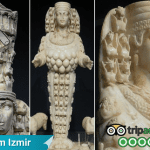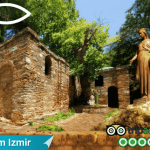Abstract
The Eastern Gymnasium of the Ancient City of Ephesus, located near the upper entrance on Mount Pion, was a 2nd-century A.D. bath-gymnasium complex built by Sage Flavious Daminaus and his wife, Vedia Phaedrina. Dedicated to the Goddess Artemis and Emperor Antoninus Pius, this facility served as an educational and training center for boys aged 6-16, providing instruction in sports, music, astronomy, medicine, and social skills. The complex included a palestra for wrestling and boxing, baths with four main sections (Apodyterium, Frigidarium, Caldarium, and Tepidarium), and an Emperor Hall with mosaics and statues. Named the “Girls’ Gymnasium” due to the discovery of numerous female statues during the 1930-1931 Ephesus excavations.
Table of Contents
Location of the Eastern Gymnasium of Ephesus
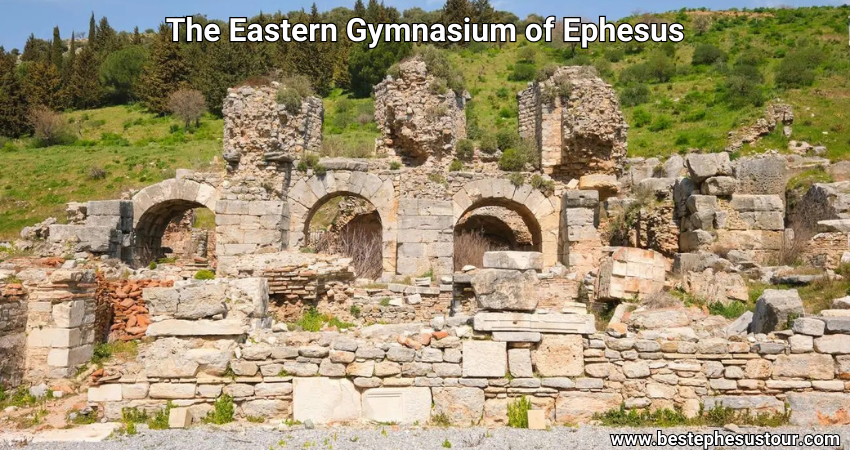
The ruins right at the left side of the modern upper entrance on the Pion mountain is the Eastern Gymnasium of Ephesus.
Construction and Dedication
As a Bath-gymnasium complex construction built by Sage Flavious Daminaus and his wife Vedia Phaedrina in the 2nd century AD, the couple dedicated the gymnasium to the Goddess Artemis and Emperor Antoninus Pius.
Purpose and Features of the Gymnasium
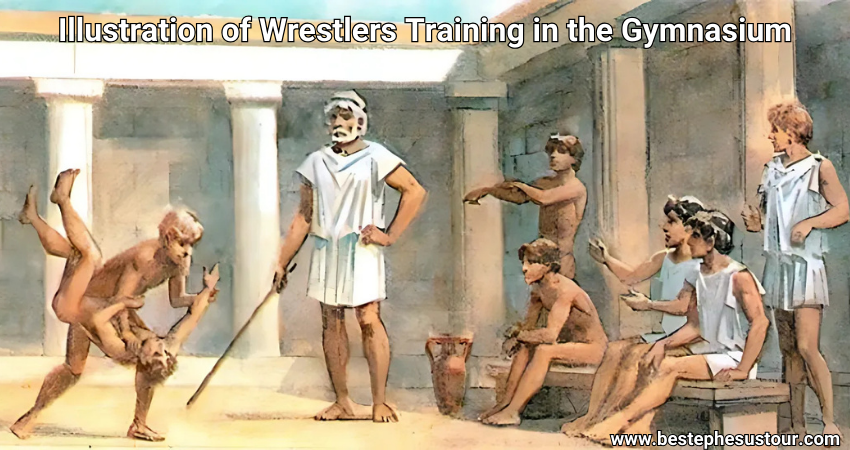
These large complex buildings were where young boys between 6-16, were educated and exercised.
The gymnasiums were an education center where sports exercised and also was like a boarding school of the modern day for music, astronomy, medicine, and social skills. Besides classrooms, the monumental buildings were a complete complex with its palestra – wrestling and boxing school – bath, and Emperor Hall.
Discovery of Statues
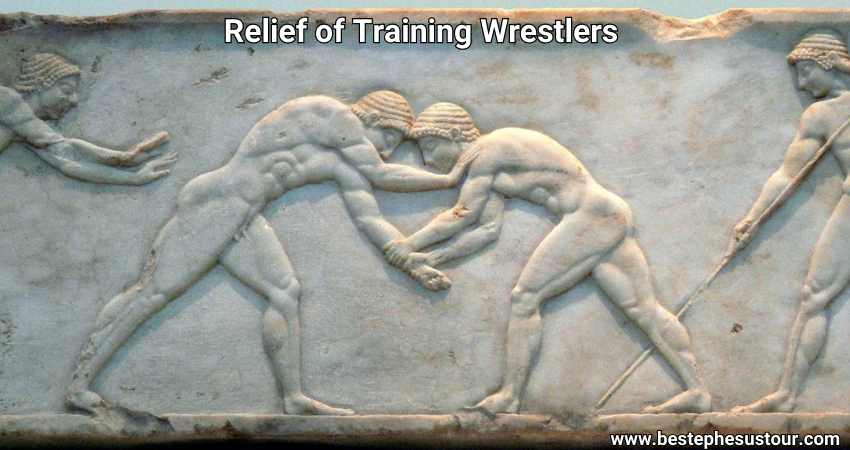
Although the educational center is reserved for boys, it is the so-called Girls Gymnasium because many young girl statues were found during the excavations around 1930-1931. The statues of founders Daminaus and Vedia Phaedrina were found at the gymnasium and are exhibited at the Archeology Museum of Izmir. Besides nameless female statues, statues of healing gods Asclepius, Dionysus, and Aphrodite were also found by archeologists. In the cold bathing room, a statue of the god of the River Kaistros was discovered.
Architectural Structure of the Ephesus Gymnasium
The Eastern Gymnasium complex has an auditorium, bathrooms, and a stadium. The hall of emperors was covered with mosaics and the emperor’s statue. The bathing rooms followed a similar concept of regular Roman Baths with four main sections, the Apodyterium, the Frigidarium, the Caldeum, and the Tepidarium.
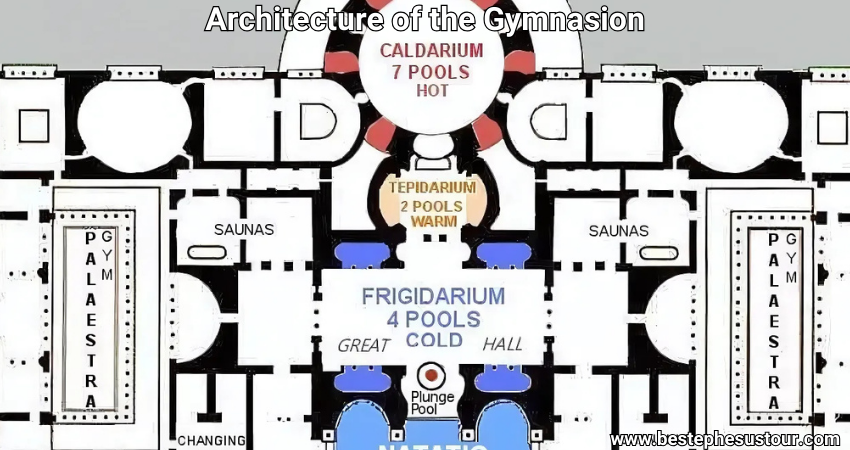
Bathing Rooms Sections
- Apodyterium: was an entrance room for changing clothes and committed self belongings such as clothes and ornamentations.
- Frigidarium: was for cold bathing to refresh and keep muscles fit, especially after sports exercises. The word “fridge” was where originated and adopted into the vocabulary.
- Caldarium: was for a hot bathing room. Swimming pools in the Calderiums section heated by the fires in the basement and warming the marbles on the floor were highly preferred.
- Tepidarium: was for lukewarm bathing. The word “tepid” in the English language originated from these sections of ancient Roman baths.
On the sides of the bathing rooms, halls were built for physical exercise and sports.
Byzantine Period and the Tomb of St. Luke

Later in the Byzantine period, a tomb constructed in front of the Gymnasium was known as the Tomb of the St Lucas. The remains of floor mosaics and base can be seen today, round building was between the Gymnasium and the front side road. Engraved plates with crucifixes have led to the misconception that it was the church for the name of St Lucas. However, according to archeological facts, the building was dating almost 100 years before St. Luke.




